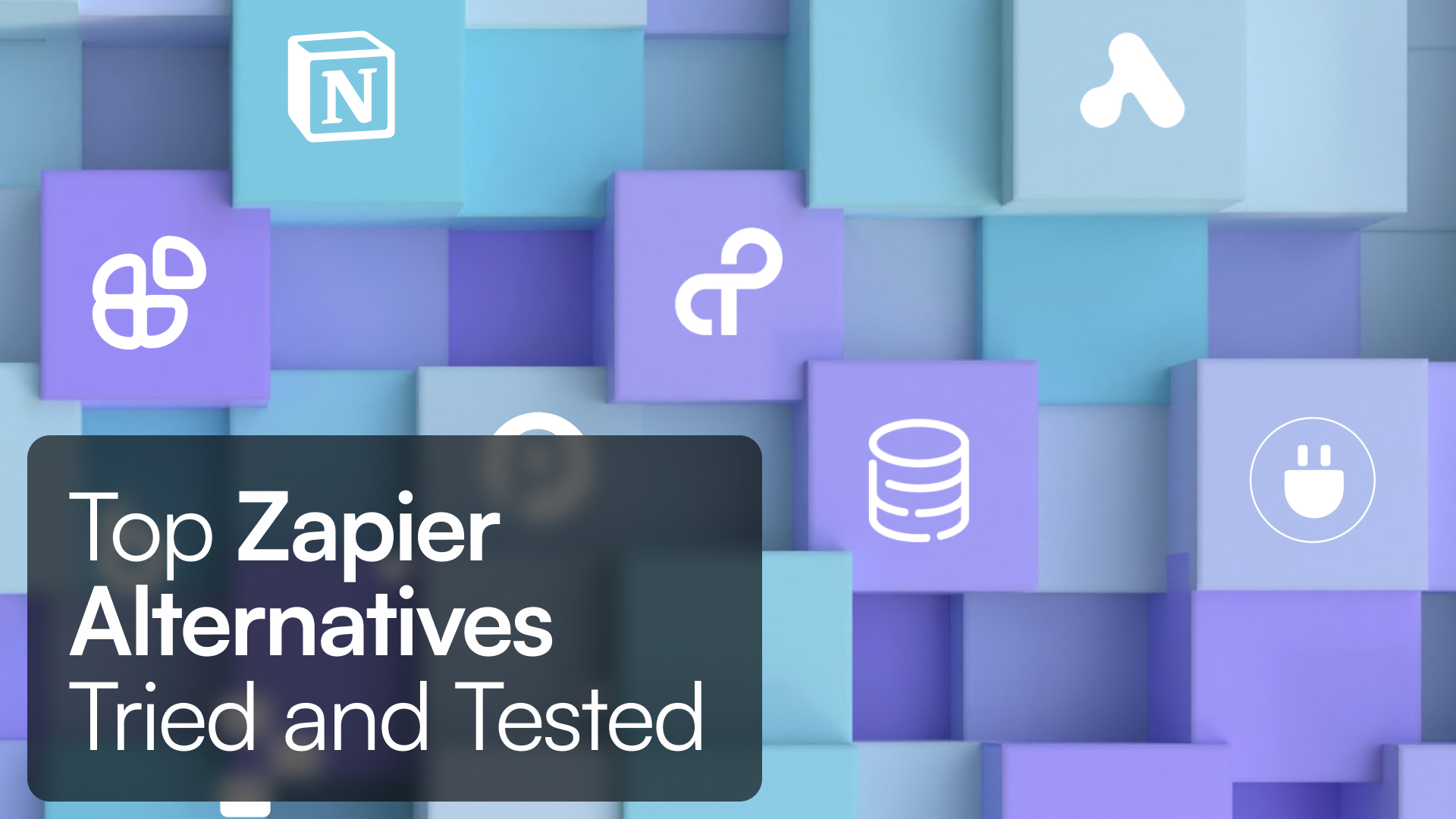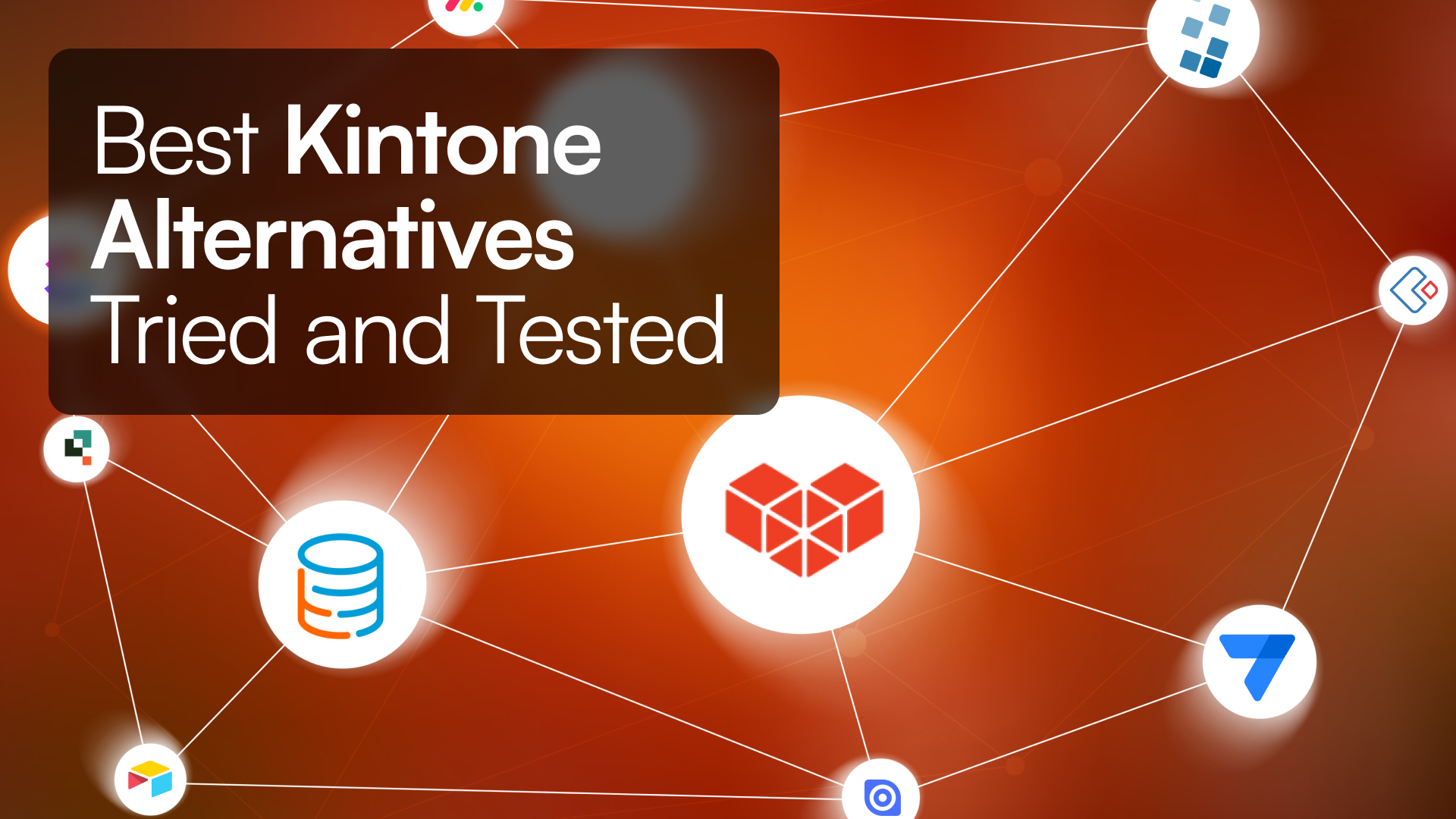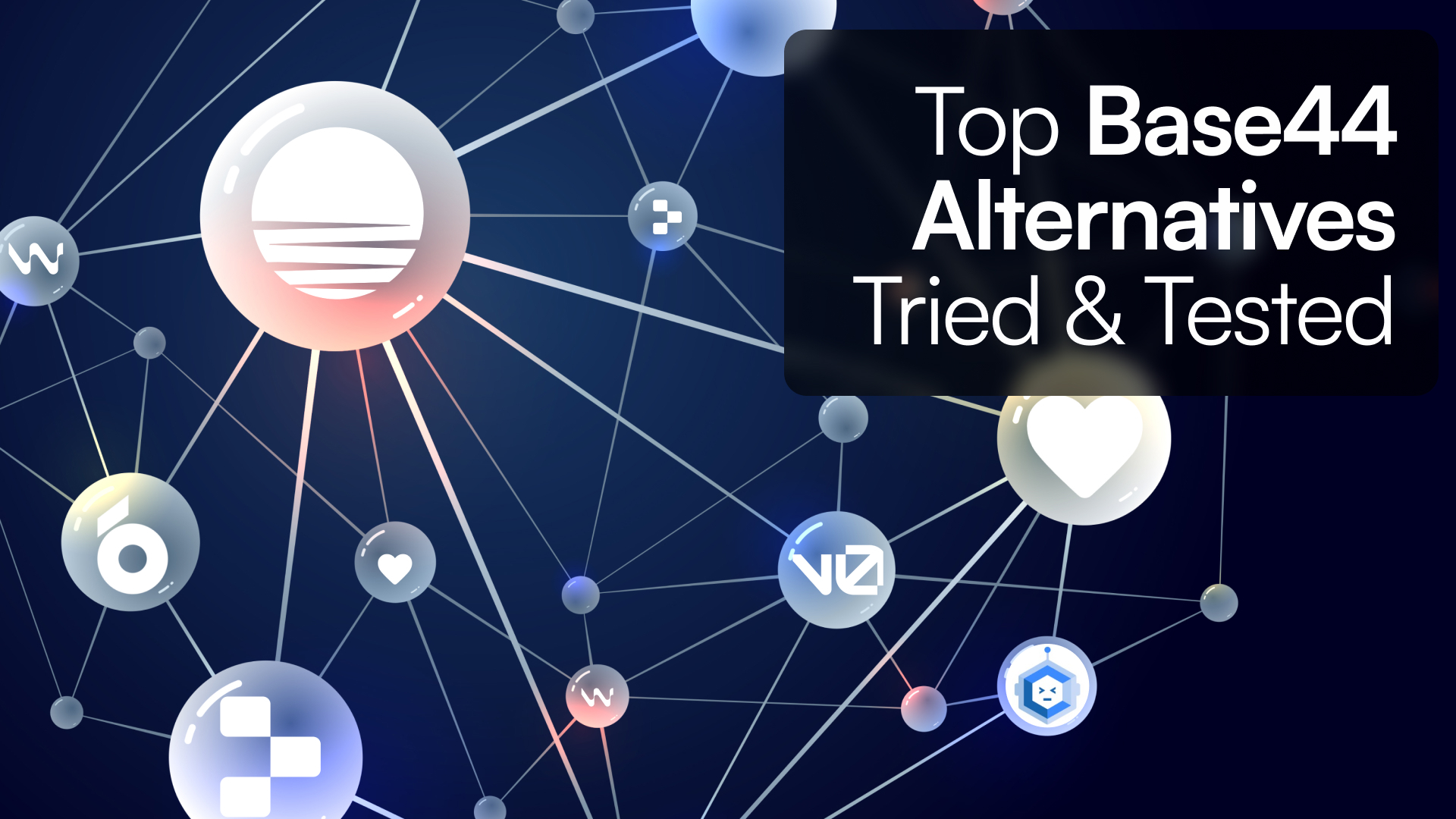Introduction
Are you searching for a powerful and flexible no-code platform beyond Glide? While Glide is a popular tool for transforming spreadsheets, particularly Google Sheets, into mobile and web applications with a simple drag-and-drop interface, it isn’t always suited for every project. For applications that require complex customizations, deeper integrations, or advanced scalability, exploring alternatives can open up new possibilities.
In this guide, we’ll dive into the top 10 Glide alternatives for 2025, each offering unique strengths to support diverse app-building needs.
Our Take on Glide Alternatives
With years of experience in the no-code space, the Tadabase team understands how different platforms cater to specific needs. Based on industry insights, we've analyzed the best alternatives to Glide, highlighting each platform's unique strengths and a 'Pro Tip' to help you maximize value.
Let’s explore our top picks, each with a helpful "Pro Tip" to make the most of these platforms.
Why Look for Alternatives to Glide?
While Glide is an excellent entry point to no-code app development, certain scenarios may require a more advanced platform. Here are a few common reasons why users look for Glide alternatives:
- Customization Needs: Glide’s simplicity can limit design control and complex workflows.
- Scalability: Ideal for small to medium apps, Glide may struggle as data and user load increase.
- Integration Flexibility: Glide’s integrations are limited; complex projects might need broader API support.
- Security and Compliance: Some industries need compliance-ready options that meet HIPAA, GDPR, and other regulations.
If your project requires flexibility, enhanced security, or the ability to manage complex workflows, the following Glide alternatives could be a better fit.
10 Glide Alternatives In 2025
| Platform | Best For | Key Features | Pro Tip |
|---|---|---|---|
| Tadabase | Data-driven apps with advanced customization | Advanced data management, automation tools, role-based permissions, and integration flexibility | Use conditional logic to create custom user experiences and protect sensitive data. |
| Fliplet | Enterprise-level web and mobile apps | Drag-and-drop, enterprise-grade security, integration with Salesforce and SharePoint | Start with pre-built templates to accelerate development and ensure a polished design. |
| Bubble | Complex projects with custom workflows | Workflow automation, plugins, scalable backend, real-time data management | Start small and scale up gradually to avoid the steep learning curve with Bubble’s extensive features. |
| Adalo | Mobile and web apps with component options | Drag-and-drop builder, app templates, component marketplace | Explore Adalo’s component marketplace for ready-to-use features like forms and user authentication. |
| Softr | Web apps using Airtable as a backend | Airtable integration, customizable templates, easy UI | Combine Airtable automations with Softr for powerful, data-driven web apps. |
| AppSheet | Workflow automation with Google Sheets | Google Workspace integration, automation tools, customizable templates | Integrate Google Workspace apps like Sheets and Forms to enhance AppSheet’s automation capabilities. |
| Thunkable | Mobile-first apps with cross-platform support | Drag-and-drop, payments, geolocation, Android and iOS compatibility | Test on real devices using Thunkable’s preview mode to catch bugs before launch. |
| Microsoft Power Apps | Enterprise apps within Microsoft ecosystem | Integration with Dynamics 365, SharePoint, Teams, and strong security features | Use Power Automate to streamline data workflows across Microsoft tools. |
| Zoho Creator | Business apps with CRM and reporting | Workflow automation, data analytics, integration with Zoho products | Leverage Zoho’s analytics tools for real-time data insights, especially for CRM functions. |
| OutSystems | Scalable enterprise applications | High performance, custom coding support, integration connectors | Use integration connectors to streamline data flow from ERP and CRM systems like SAP or Salesforce. |
1. Tadabase 
Tadabase offers a powerful and flexible platform for businesses looking to build data-driven apps that scale. Known for its database-first approach, Tadabase empowers users to create highly customizable applications, including CRM systems, project management tools, and dashboards. With Tadabase, users can easily integrate with various data sources and automate workflows for seamless business operations.
- Key Features: Advanced data management, customizable components, automation tools, and integration capabilities.
- Best For: Businesses needing highly customized, data-centric applications that can scale as they grow.
- Pro Tip: Use Tadabase’s conditional logic and role-based permissions to create user-specific experiences and maintain control over sensitive data.
2. Fliplet 
Fliplet stands out for its versatility and focus on enterprise-level app development. Designed with businesses in mind, it offers enhanced security, integration, and customization capabilities. Fliplet is particularly favored for its ability to build both web and mobile applications.
- Key Features: Drag-and-drop interface, pre-made templates, enterprise-grade security, and comprehensive integration options.
- Best For: Enterprises or teams needing scalable, secure, and feature-rich applications.
- Pro Tip: Leverage Fliplet’s pre-built templates to jumpstart projects and customize from there to save time while ensuring a polished, professional look.
3. Bubble 
Bubble is known for its powerful backend capabilities, making it suitable for building more complex applications with custom workflows. Although it has a steeper learning curve, Bubble’s depth of functionality, including database management and extensive plugin options, makes it a robust choice.
- Key Features: Extensive plugins, workflow automation, scalable infrastructure, and real-time data handling.
- Best For: Complex projects requiring a high level of customization and backend management.
- Pro Tip: Start small and scale up with Bubble. Given its rich feature set, tackling smaller features first helps minimize the learning curve and prevents overwhelm.
4. Adalo 
Adalo offers a straightforward, user-friendly interface similar to Glide but with additional customization and component options. It’s ideal for creating both mobile and web applications and features a marketplace for pre-built components.
- Key Features: Drag-and-drop builder, data management, app templates, and marketplace for components.
- Best For: Building visually appealing mobile and web apps quickly and easily.
- Pro Tip: Explore Adalo’s marketplace for components and templates to streamline development—especially useful for integrating common app features like forms or user authentication.
5. Softr 
Softr is a fantastic alternative for users who prefer Airtable as a backend. It enables users to create web apps and client portals from Airtable data quickly. Softr is intuitive and focuses on web applications, making it ideal for client portals, marketplaces, and membership sites.
- Key Features: Airtable integration, customizable templates, and simple UI.
- Best For: Creating data-driven web apps with Airtable as the backend.
- Pro Tip: Use Airtable automations with Softr to enhance functionality, such as triggering workflows or sending notifications based on user actions within your app.
6. AppSheet 
Now owned by Google, AppSheet is a powerful no-code platform allowing users to create apps directly from data sources like Google Sheets. It’s known for its automation capabilities, making it perfect for workflow automation and data-driven applications.
- Key Features: Automation tools, integration with Google Workspace, and customizable templates.
- Best For: Automating workflows and creating apps powered by Google Sheets.
- Pro Tip: Combine AppSheet with Google Workspace tools to maximize efficiency, as AppSheet seamlessly integrates with Sheets, Forms, and Drive for advanced data handling.
7. Thunkable 
Thunkable specializes in mobile app development and supports both Android and iOS platforms. It’s a great option for developers looking to launch apps on app stores. Thunkable’s drag-and-drop interface allows users to add sophisticated functionality, such as payments and geolocation.
- Key Features: Cross-platform compatibility, drag-and-drop interface, and robust mobile components.
- Best For: Building mobile-first applications with minimal coding required.
- Pro Tip: Utilize Thunkable’s app preview mode to test features on real devices, helping you catch design issues or bugs before deployment.
8. Microsoft Power Apps 
Part of the Microsoft Power Platform, Power Apps is ideal for enterprise users who need deep integration with Microsoft tools like Dynamics 365, SharePoint, and Teams. With Power Apps, teams can automate business processes and integrate data seamlessly.
- Key Features: Integration with Microsoft products, robust workflow capabilities, and security features.
- Best For: Enterprise businesses deeply integrated into the Microsoft ecosystem.
- Pro Tip: Automate data entry tasks using Power Automate alongside Power Apps to reduce manual work and improve accuracy across Microsoft tools.
9. Zoho Creator 
Zoho Creator is a flexible no-code platform that enables users to build custom business applications. It offers tools for analytics, reporting, and workflow automation, making it suitable for teams needing apps to support data analysis and CRM functions.
- Key Features: Workflow automation, integration with Zoho products, and data analytics.
- Best For: Businesses looking for a CRM-compatible platform with advanced reporting.
- Pro Tip: Leverage Zoho Creator’s built-in analytics to visualize app performance and make data-driven decisions, especially useful for CRM and operational tracking.
Explore Tadabase vs Zoho Creator.
10. OutSystems 
OutSystems is a high-performance low-code platform designed for building scalable, enterprise-level applications. It supports custom coding, making it an ideal choice for teams that need flexibility without fully committing to traditional coding.
- Key Features: Scalability, high-performance applications, and custom coding capabilities.
- Best For: Enterprises seeking flexibility, scalability, and advanced app customization.
- Pro Tip: Use OutSystems’ integration connectors for SAP, Oracle, and Salesforce to streamline data flow and enhance app functionality across enterprise systems.
Choosing the Right Glide Alternative
Selecting the best Glide alternative depends on your project’s requirements for customization, integration, scalability, and security. Whether you’re looking for data management capabilities or consumer-focused app design, there’s an option here to meet your needs.
Why Tadabase Stands Out

Among the many alternatives, Tadabase combines customization, scalability, and security to offer a powerful solution for building data-driven applications. Whether you need CRMs, project management tools, or custom dashboards, Tadabase enables you to create complex, scalable solutions that grow with your business.
Ready to build your next app? Try Tadabase today and transform your data into powerful, custom applications!
Frequently Asked Questions
Platform Features and Functionality
-
What is Glide, and why is it popular for no-code app development?
- Glide is a no-code platform that enables users to create mobile and web apps by connecting to Google Sheets or Excel files. It’s popular due to its simplicity, allowing users with little to no coding experience to quickly turn spreadsheets into interactive applications via drag-and-drop functionality. Glide is ideal for small to medium-sized projects that need a straightforward, easy-to-launch solution.
-
Why might I need an alternative to Glide?
- While Glide is a great tool for basic applications, it has limitations in customization, scalability, integration options, and data security. If your project needs more design control, complex workflows, broader integration with other tools, or compliance with data regulations like HIPAA or GDPR, a different platform may better meet those needs.
-
What are the top features to look for in a Glide alternative?
- Important features include:
- Customization options for unique designs and workflows.
- Scalability for handling large datasets and user volume.
- Integration capabilities to connect with CRMs, ERPs, or custom APIs.
- Security and compliance for data protection.
- Automation tools for efficient workflows and processes.
- Important features include:
-
What is the best Glide alternative for creating complex, data-driven applications?
- Tadabase is a top Glide alternative for complex, data-driven applications requiring advanced customization and scalability. With its database-first approach, Tadabase supports workflows, automation, and role-based permissions, making it ideal for businesses needing CRMs, project management tools, and data dashboards.
-
Which Glide alternative provides the best design flexibility for visually rich applications?
- Adalo and Bubble offer strong design flexibility:
- Adalo provides a drag-and-drop interface and a marketplace of components for visually engaging mobile and web apps.
- Bubble allows full customization of app elements, though it has a steeper learning curve due to its advanced feature set.
- Adalo and Bubble offer strong design flexibility:
-
Can I use a Glide alternative to build apps for both web and mobile?
- Yes, many Glide alternatives support both web and mobile apps:
- Adalo, Thunkable, and Fliplet enable users to create apps that function across devices, including native mobile deployment.
- Tadabase and Microsoft Power Apps support responsive designs that adapt to different screen sizes.
- Yes, many Glide alternatives support both web and mobile apps:
Integration and Compatibility
-
Can I integrate a Glide alternative with existing tools like Salesforce, SharePoint, or Google Workspace?
- Yes, several Glide alternatives offer integration options:
- Fliplet integrates with Salesforce and SharePoint.
- AppSheet works well with Google Workspace.
- Microsoft Power Apps seamlessly connects with Microsoft tools like Dynamics 365, SharePoint, and Teams.
- OutSystems supports connectors for SAP, Salesforce, and other major enterprise systems.
- Yes, several Glide alternatives offer integration options:
-
Which Glide alternative offers the best integration with Airtable?
- Softr is an excellent Glide alternative for Airtable integration, allowing users to create web applications and client portals powered by Airtable data. Softr offers customizable templates and a beginner-friendly interface.
-
Are there Glide alternatives specifically for workflow automation?
- Yes, several Glide alternatives specialize in workflow automation:
- AppSheet is focused on automation and integrates well with Google Workspace.
- Zoho Creator and Microsoft Power Apps offer powerful workflow capabilities, enabling teams to automate processes across tools and datasets.
- Yes, several Glide alternatives specialize in workflow automation:
-
What if I need my app to function offline?
- Fliplet and AppSheet offer offline functionality, allowing users to access data and interact with the app without an internet connection. This feature is especially useful for mobile apps used in fieldwork or areas with limited connectivity.
Pricing and Deployment Options
-
How much do Glide alternatives cost? Are there free options?
- Pricing varies across platforms:
- Some options, like Bubble and AppGyver, offer free plans with limited features, suitable for small projects or testing.
- Tadabase, OutSystems, and Microsoft Power Apps provide enterprise-level plans, with pricing typically scaling based on features and user volume.
- Many platforms offer a free trial or freemium version, allowing users to explore the platform before committing to a paid plan.
- Pricing varies across platforms:
-
Are there any open-source or self-hosted alternatives to Glide?
- Yes, open-source or self-hosted options provide more control over deployment:
- Appsmith and Budibase are popular open-source platforms that can be self-hosted, offering flexibility but requiring more technical knowledge for setup and maintenance.
- Yes, open-source or self-hosted options provide more control over deployment:
-
What support options are available if I encounter issues with my chosen platform?
- Support varies depending on the platform and pricing plan:
- Community forums and documentation: Most platforms, including Bubble and AppSheet, have active communities and extensive documentation.
- Email and chat support: Platforms like Tadabase, Fliplet, and Microsoft Power Apps offer email or live chat support for paid plans.
- Dedicated support plans: Some platforms provide dedicated account managers or premium support for enterprise clients.
- Support varies depending on the platform and pricing plan:
Technical and Scalability Concerns
-
How do Glide alternatives compare in terms of scalability?
- Scalability varies by platform:
- Tadabase and OutSystems are built for enterprise-level applications, supporting large datasets and high user volume.
- Bubble offers scalable infrastructure for complex apps, though it may need optimization for large-scale projects.
- AppSheet and Microsoft Power Apps scale effectively within Google Workspace and Microsoft ecosystems.
- Scalability varies by platform:
-
What are some limitations of no-code platforms compared to traditional development?
- No-code platforms like Glide and its alternatives offer ease of use and speed but have limitations:
- Customization Constraints: Some complex functions may be limited.
- Scalability: Some no-code tools might struggle with very large-scale apps.
- Performance: Advanced apps with numerous workflows may experience slower performance.
- Security: Not all platforms offer enterprise-grade security, which can be critical for regulated industries.
- No-code platforms like Glide and its alternatives offer ease of use and speed but have limitations:
-
Can I migrate my app from Glide to another platform?
- Migrating from Glide may require rebuilding certain components, especially if moving to a platform with different data structures. Many alternatives, however, support easy data imports (e.g., from Google Sheets or Airtable), simplifying the migration process.
-
How do I decide which Glide alternative is best for my project?
- Consider your specific needs:
- For data-driven, customizable apps: Tadabase or Bubble are strong choices.
- For visually appealing, consumer-facing apps: Adalo or Thunkable.
- For compliance and enterprise integration: Fliplet or Microsoft Power Apps.
- For beginner-friendly, lightweight apps: Softr and AppSheet are suitable options.
- Consider your specific needs:







